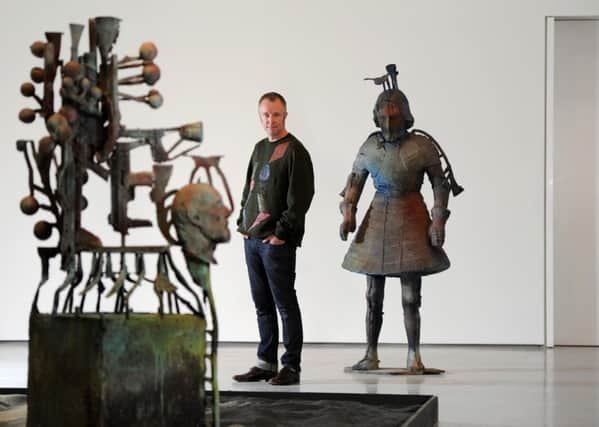Show that explores the art of war


The new exhibition of contemporary sculpture at the Hepworth Wakefield, Conflict and Collisions, couldn’t be more timely – as we commemorate the centenary of the First World War, we still live in a world affected by war and division.
Conflict and Collisions showcases the work of three artists – Folkert de Jong, Toby Ziegler and Alexandra Bircken – whose site-specific commissions explore the themes of historical and modern-day conflict and of man versus machine and our relationship to technology.
Advertisement
Hide AdAdvertisement
Hide AdDutch artist de Jong’s work has been created in response to the collection of arms and armour at the Royal Armouries in Leeds, focussing in particular on the personal armour of Henry VIII and modern firearms. “I was immediately fascinated by the question of how we relate to this kind of collection and how they retain a purpose today but also in relation to contemporary art,” says de Jong. “It was the presence in the museum of Henry VIII that struck me most.
“He is such a big figure in the history of England and you could see what a flamboyant character he was.” Using digital and 3D technology, de Jong first made 3D scans of the armour. “Then I cut it out into polystyrene so that I was changing something that was very loaded with historical meaning and cultural heritage into something that is a waste material and that gave me a comfortable distance to play with.” He then transformed those figurations into their final presentation as bronze sculptures. “I wanted to talk about how we value material items,” he explains. “The purpose of making art is to change something in people, to change their reality.”
The pieces he has created are colourful and lively and convey a sense of humour and playfulness which is thought-provokingly at odds with the subject matter. The texture and hue of the armour gives it an organic feel as though there is a living, breathing person inside.
Throughout the project De Jong worked closely with Karen Watt, senior curator of art and armour and the Royal Armouries. “It is wonderful that our collection could inspire an artist to create something so magical,” she says. “What Folkert has created is not just static, it becomes a whole entity. He has achieved something exceptional and it has given a whole new dimension to our collection.” War, conflict and power are recurring themes in de Jong’s work. They are subjects which have engaged him for many years, he says, and can be traced back to his childhood. “I grew up on the coast of Holland where there were a lot of Second World War fortifications on the beaches. I spoke to my grandfather about the war and as children we used to play soldiers. That sort of shaped my interest – the visualising of it and the heroic stories, trying to understand it.”
Advertisement
Hide AdAdvertisement
Hide AdDe Jong also created new work in response to the collection of modern firearms at the Armouries. “The armour was very nostalgic but the contemporary weaponry is actually being used now. It was a combination of the historical and the actual and that was provocative,” he says. “I wanted to explore that but not in a moralistic way. Are we better human beings than we were 500 years ago? I hope that this work will make people think about that. I have a fascination with why we are attracted to the visual aspect of warfare – maybe we are curious about the fact that we are fragile, mortal beings and perhaps that is something we should speak about.”
n The Hepworth Wakefield until January 25, 2015.